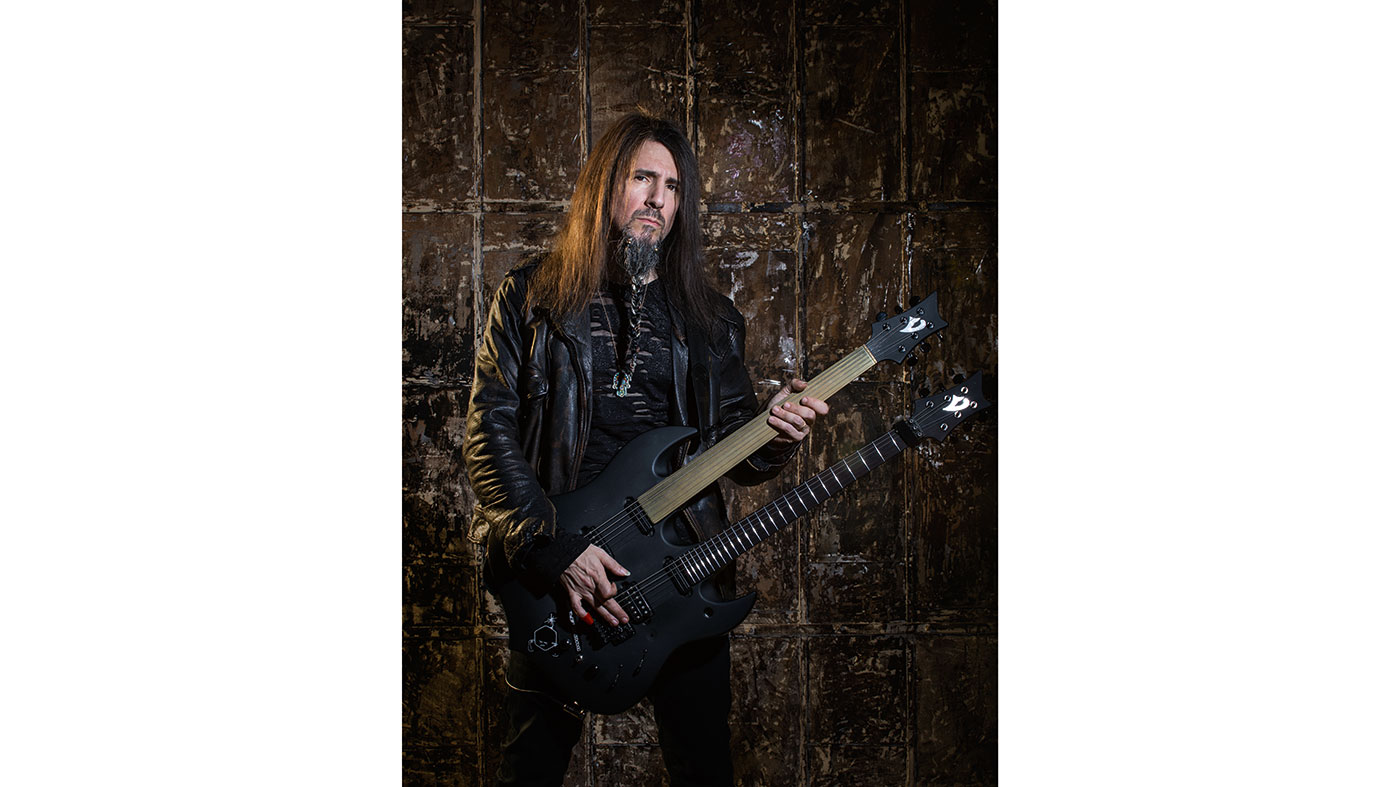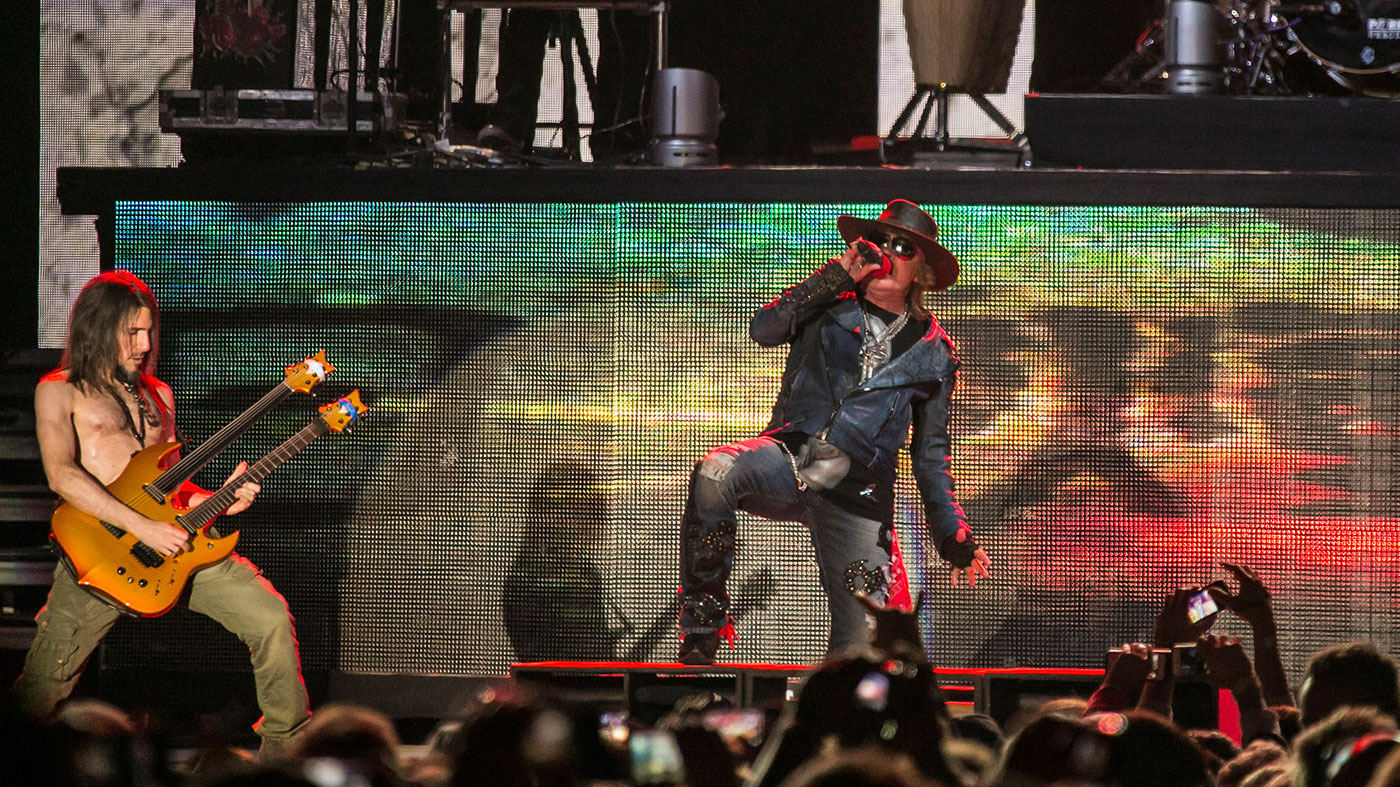Ron ‘Bumblefoot’ Thal’s top tips for guitarists: “Learn things that aren’t guitar solos - learn horn parts, violin pieces or piano parts on your guitar”
Sons Of Apollo's six-string virtuoso talks technique

Shrapnel Records founder Mike Varney has scouted out numerous high-profile guitar prodigies. During the neoclassical glory of the 1980s, Varney discovered the likes of Yngwie Malmsteen, Tony MacAlpine, Paul Gilbert and Jason Becker. Amongst this sparkling list is the inimitable Ron ‘Bumblefoot’ Thal.
His debut would arrive halfway into the following decade, and alongside that fret-burning wizardry, it was his Zappa-like humour, quirky rap-funk sensibilities and unique usage of thimbles to extend the range of his strings that truly set him apart.
Even the instruments he held in his hands were making a statement - from his Ibanez Roadstar painted and eyed like swiss cheese, a 37-fret giant hand Custom Ax and, perhaps most notably, his Vigier Flying Foot guitar, built so that wings would extend out whenever the whammy bar was pressed.
In 2004 Thal got the life-changing invitation to replace Buckethead in Guns N’ Roses, headlining the biggest stages around the world and performing on their long-awaited, yet criminally overlooked, Chinese Democracy album. Having parted ways following a decade of loyal service to Axl Rose, he’s been focusing most recently on a heavier, more progressive shade of rock in new supergroup Sons Of Apollo, alongside Mike Portnoy and Billy Sheehan.
Here he explains the theory behind some of the head-melting fusion heard on last year’s Psychotic Symphony debut, offering the Bumblefoot guide to getting the most out of your instrument…

Train of thought
The Bumblefoot guide to thinking differently when things get stale…
“A big mistake guitarists make is when they think they are stuck in a box, they feel they need to get out of the box and just end up in a different box! If you have go-to riffs that you are comfortable with, instead of trying to get rid of them, get creative and expand. You can be doing all your typical pentatonic riffs; all you need to do is push one side of the box to make it bigger. Then you can push on another side of the box, eventually expanding the comfort zone of it all.
Want all the hottest music and gear news, reviews, deals, features and more, direct to your inbox? Sign up here.
If you have go-to riffs that you are comfortable with, instead of trying to get rid of them, get creative and expand
“A good way is starting off with standard pentatonics - say you are in E minor on the 12th fret - what you could do is add extra notes on the 11th fret too. You could call them the outside notes, you’ll find a major 7th on the high E, followed by a sharp 4th, a second, a major 6th, a major 3rd and a final major 7th. That’s a really easy thing you can do to push one wall of the box. Sometimes you might play all the notes, others you throw them in however you see fit… it’s pretty much as simple as that.”
Use your illusion
Look to other instruments to help find new ways to phrase…
“Every guitarist needs to sound like themselves. Don’t think too much and don’t over-analyse. My biggest advice is learn things that aren’t guitar solos: learn horn parts, violin pieces or piano parts on your guitar. Learn a guitar solo and you’ll play the guitar like a guitar, while other instruments will teach you the phrasing and nuances that are natural to them. You will discover all these new ways of stretching and bending, that will help open up your own expression.
“It probably sounds weird, like: ‘Hey kids, listen to non-guitar music to get better at guitar!’ But just go and see what epiphanies you get and what you realise in the process, musically and physically, in terms of trying to replicate ideas that differ in all sorts of ways.”

The minors
How to use different minor scales for tension and release…
“Melodic minor is a beautiful scale because it’s a major scale with a flat third. So there are all the resolves and builds from the major notes, yet touches of this sad thing! Say you want to finish on a D minor chord, in natural minor the four and five chords would be G minor and A minor. In Yngwie’s harmonic minor, it would be G minor and A major. In melodic minor, they would be G major and A minor. There are different ways to build people on a high that resolves in minor - there can be a stronger emotional impact doing it like that.
How you hold your pick, even if it’s just for a moment, will affect how fast or precise you play
“The song Another Nail Through My Heart by Squeeze, for example, goes through all sorts of modes, changes and keys with major build-ups that resolve on the minor. There’s even an old Priest song called The Rage that used melodic minor resolves built off major chords. Those are good reference points to say, ‘Hey, this shit works, man - these aren’t just silly altered minors from jazz school!’”
The right angle
Fluidity is the key to Bumblefoot’s right-hand precision…
“Don’t be too rigid - I’d say that’s an important part of it. Let your thumb and finger holding the pick move, too. You can get a lot more precision, more comfort and just more everything by doing that. You may find you need to change the angle you attack the strings as you are picking. Tilting a certain direction, as if you are dragging it up the strings.
“Think about the decline and incline, because how you hold your pick, even if it’s just for a moment, will affect how fast or precise you play. Get used to letting the pick roll into different angles while holding it - rather than feeling like your entire arm, hand and wrist is this piece of wood.”

Gunsmithery
Ron reflects on his Guns N’ Roses state of mind…
“My focus will depend on the project. The Guns N’ Roses show was not about technical stuff; it was more about delivering the melodies and riffs in the right pocket, with the right feel. My aim was to give people the experience they came there to get - that’s what you should want to do, and it can be just as difficult or require just as much focus, despite not requiring super-fast playing in a weird time signature.
Simple should never be frowned upon, because it’s the way you play it and what you do to those notes that count
“I was thinking more about bending in the perfect way to create just a hair of tension before it hits pitch, or maybe my vibrato, or anything else to nail the phrasing. It wasn’t about fast scales - that was the least of my worries in that situation.
“Different aspects of my playing are at the forefront and more blatant in different bands, but my overall mindset is that there’s always plenty to nail. Something that sounds simple should never be frowned upon, because it’s the way you play it and what you do to those notes that count. Is there an emotional connection? If you think you are above that, you are going to suck!”
Move with the groove
Why economy picking makes sense when crossing strings…
“Economy picking is simply about using the direction you are going in to your advantage. If you pick down, followed by an up stroke on the next string, you are actually travelling farther away from where you need to go. It might make more sense to go down and down, or start with an upstroke followed by a down, which gets you closer to your destination. Though there might be times you don’t want to do that, like when you need to chirp out an artificial harmonic or something else.
“People that set rigid, harsh rules for their technique will find it very limiting… in most situations you have to be practical. Frank Gambale developed a style of picking by being smart and practical, it turned into something amazing. He’s a great example of going down, then down again for three notes on the next string and repeating that, or using the same concept coming back up. I do a lot of that stuff, too.”

Street of dreams
How to avoid rehashing licks the same old licks…
“Your hands should simply do what you ask of them; they are like the mouth for the words you think in your head. You shouldn’t even be looking at the neck. You should be listening to the music inside you that you need to get out within a fraction of a second later.
Your hands should simply do what you ask of them, they are like the mouth for the words you think in your head
“It’s just like talking: all the hands need to do is learn the language. If you hear a major 3rd in your head, you need to know it’s four frets up or one string down and a fret back or whatever it is! I’m usually thinking about the connections between the notes in the melody that I’m hearing.”
Nimble with the thimble
Thal explains the thinking behind that metal cap trickery…
“You can find household items and turn them into music. Look about you for egg-beaters and whatever else is lying around, haha! I realised pretty early on that the fretboard stopped but the strings continued.
“Just think about it: you play the string, not the fretboard - which acts more like an assistant or guide. The string is what you want to be working. I realised when I ran out of frets, I could use a metal cap attached to my finger as a mobile fret touching the string… instead of the string touching a fret! It felt like a sensible way to access the additional notes in the most efficient way.”

A day at the races
Don’t let the techniques dictate what you are trying to convey…
“Obviously, with the guitar being a physical instrument, it’s all about developing technical precision - but it’s easy for that to become the focus, like a sport. We really musn’t forget it should be about the music and expressing what you feel onto those strings - not competing with anything or anyone else.
Listen to the music in your head and hum it. Try to be there with that note, first inside and then let it out on the guitar
“As crazy as it sounds, listen to the music in your head or in your heart or wherever it is inside of you, and hum it. Try to be there with that note, first inside and then let it out on the guitar rather than trying to be faster than the next guy.”
The guitar gym
Why it’s important to stay in shape…
“I would advise that you play every day - that’s really important. I think you are better off doing 10 minutes every day than skipping it and doing an hour at the end of the week or whatever. But I might have travelling days lugging around suitcases that will mean it’ll take extra practice to get warmed up and loose again.
“Before I go onstage, I’ve always been pretty chilled out in all of the bands I’ve played in. We get the go-ahead when it’s time to play, the tech hands you the guitar and you’re off. And usually you get warmed up by the last song!”

The French connection
How an American guitarist ended up becoming one of Vigier’s most important faces…
“I’ve been with Vigier since 1997, so over 20 years now. I was doing a clinic in France and one of their reps brought one of their models that played so much better than my own guitars.
“I had dinner with the owner, Patrice - who is the sweetest guy in the world. He’s been open-minded about my propensity for the weird, asking him to make me strange guitars that are as part of the expression as the music made on them. There was the flying foot guitar, replicas of my original Swiss cheese guitar and then, of course, the DoubleBfoot fretless/fretted model. You can see how much pride and care has been taken in building them. Patrice sees his guitars like works of art - his company is not trying to make billions or get instruments into every store in the world - it’s simply about making beautiful guitars.
“Those are going into Engl Invader 2 heads into their 4x12 cabinets. I also have this Line 6 Helix that I’m absolutely loving, there is so much you can get out of them when it comes to the impulse response that shapes your tone and adds realism. The difference before and after is irrefutable, undeniable and, for me, indispensable! I also use a Dunlop 95Q wah and a lot of TC Electronic pedals - they’re the best of the best, especially with all the TonePrint editing and the new [MASH] on/off switch that works like an expression button going from zero to 100!”
Amit has been writing for titles like Total Guitar, MusicRadar and Guitar World for over a decade and counts Richie Kotzen, Guthrie Govan and Jeff Beck among his primary influences. He's interviewed everyone from Ozzy Osbourne and Lemmy to Slash and Jimmy Page, and once even traded solos with a member of Slayer on a track released internationally. As a session guitarist, he's played alongside members of Judas Priest and Uriah Heep in London ensemble Metalworks, as well as handling lead guitars for legends like Glen Matlock (Sex Pistols, The Faces) and Stu Hamm (Steve Vai, Joe Satriani, G3).


